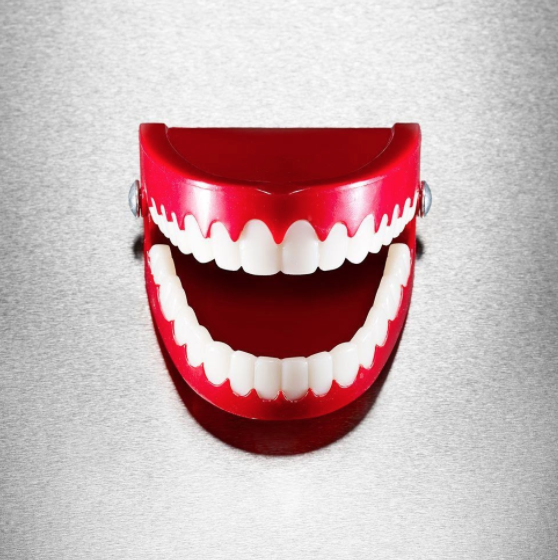SMILE!

Inside the growing perfect gleaming incisor industry.
I always considered myself lucky, a winner in at least one, slim silo of the genetic lottery. While all my friends spent middle school picking out contrast color rubber bands as the consolation prize for two years of braces, my molar-to-molar smile was close enough to perfect that I skipped the orthodontist.
Until I was 37.
I found myself routinely grinning into the mirror, taking note. Was my bottom left canine suddenly making a break for some invisible finish line outside my mouth? Had a premolar decided to lie down on its side while its neighbors huddled inward, as if my mouth had decided to clench into a fist? My dentist told me I had crowding and suggested Invisalign. I went for a consultation. Three years later, five months into the new, publicly masked Covid world, I bit the proverbial bullet in the form of clear plastic aligners to be worn 22 hours a day.
I wasn’t alone. Everywhere I turned—my sister, two close friends, five former colleagues, acquaintances left and right, all in their late thirties or forties—were embarking on an Invisalign treatment or had recently completed one. It wasn’t a coincidence.
“There is a huge uptick in cosmetic dentistry,” says Marc Lowenberg, a partner in the ritzy New York City dentistry practice Lowenberg, Lituchy & Kantor who is now booked two months in advance for pricey porcelain veneers. There are reasons for this. One is that spending has shifted from clothes and travel to self-improvement; another is the buzzword of the era: Zoom. “People are actually staring at their own teeth all day, so they see all the flaws in them,” Lowenberg says.
Teeth, like any other part of our bodies, age—and it isn’t always pretty. Your teeth shift toward the midline of your face as you get older. They start getting crooked, turning and crowding, even if you had straight teeth or braces as a kid. They stain and become harder to bleach. “The teeth darkening goes hand in hand with the crowding, and teeth are getting shorter because they’re being ground down,” says Joseph Hung, the orthodontist who handled my case; he’s an Invisalign specialist, and he recommends that everyone get a night guard or retainer at some point.
On top of that, the face loses volume and elasticity. “Your upper lip starts to sag, so it covers more of the upper teeth,” Lowenberg says. “Gravity pulls down your lower teeth, and lower teeth typically get more crooked as you age than upper teeth.” Hung says that patients report that their faces feel unsupported in one spot, or that their jaws begin to look asymmetrical. That’s where fillers and injections come in, but the balance between the hard structure of teeth and soft tissue of the face has to be adjusted.
“To add insult to injury, patients are going to dermatologists and getting their lips filled, which is putting weight in the lip, pushing it down, showing less tooth, and making the problem worse,” says Michael Apa, the head of Apa Aesthetic cosmetic dentistry, which has offices in New York, Los Angeles, and Dubai.
For those interested in a total mouth makeover, getting Invisalign from an orthodontist (receiving treatment from a general dentist or aligners-by-mail services are frowned upon by the dental elite) is a great option, but you have to be willing to put the time in; the trays have to be in for 22 hours a day, and the average treatment is around a year. The company has become increasingly slick. “There are very few things that I can’t do with Invisalign now,” says Hung, who designs every patients teeth himself with an eye toward their bone and facial structure. “If you had asked me in 2002 if I could fix most things with Invisalign, I’d have said no.”
For bigger problems—and deeper pockets—there are porcelain veneers, which are Lowenberg’s and Apa’s specialty. The Rolls-Royce of cosmetic dentistry, as Lowenberg puts it, comes in two forms, the newer CAD/CAM veneers, which are machine made, and the old-fashioned handcrafted ceramic versions, which are still the gold standard, as they give the most aesthetically natural results. “What you can do with porcelain veneers, in terms of color, position, and shape, to catch up to the rest of the face and make the picture complete,” Apa says, noting that veneers can create the illusion of a palate expander, a Little Shop of Horrors-esque procedure that is easy to do in children but extremely painful for adults. Sadly, veneers aren’t forever, but they can last for 15 or 20 years if done well. They also come at a cost: Apa charges $4,000 per tooth or about $80,000 for a full set. It’s called a million-dollar smile for a reason.

